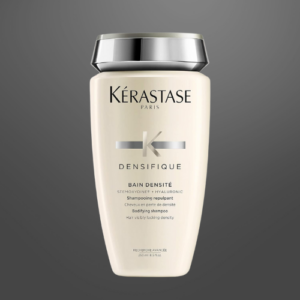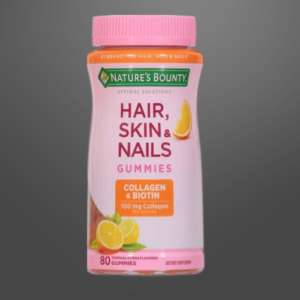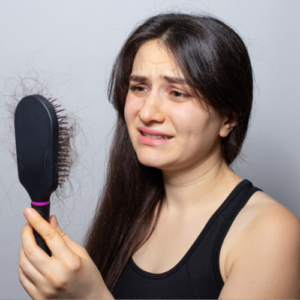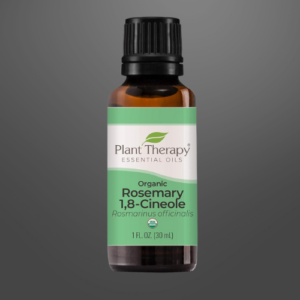If you’re grappling with thinning hair, know that you’re not alone—many people face this challenge at some point in their lives. It can be frustrating and disheartening, but the good news is that the right shampoo can make a significant difference in your hair’s health and appearance. In this blog post, we’ll walk you through the essential factors to consider when selecting a shampoo specifically designed for thinning hair. From understanding key ingredients to identifying the best options for your unique hair type, you’ll gain the insights you need to make an informed choice that will help you feel more confident and empowered. Let’s embark on this journey to healthier hair together!
The table of content
Understanding thinning hair.
Thinning hair can be a distressing experience for many people, but it’s also a common issue that affects individuals across various age groups and backgrounds. Understanding the causes of thinning hair and how to tackle them can empower you to take control of your hair health.
Causes of thinning hair.
Thinning hair can arise from a multitude of biological and environmental factors. Here’s a closer look at some of the most prevalent causes:
* Biological factors:
-
- Genetics: Hereditary conditions such as androgenetic alopecia (male or female pattern baldness) often play a significant role. If your parents experienced hair thinning, there’s a likelihood you may too.
- Hormonal Changes: Hormonal shifts, especially during pregnancy, menopause, or due to conditions like polycystic ovary syndrome (PCOS), can lead to hair thinning.
- Medical Conditions: Certain medical conditions, including thyroid disorders, lupus, and alopecia areata, can cause hair loss.
- Nutritional Deficiencies: Lack of essential nutrients like iron, zinc, and vitamins A and D can negatively affect hair health.
* Environmental factors:
- Stress: Prolonged stress can trigger telogen effluvium, a condition where hair prematurely enters the shedding phase.
- Hairstyling Practices: Frequent use of heat styling tools, harsh chemical treatments, or tight hairstyles can damage hair and contribute to thinning.
- Pollution and Climate: Environmental pollutants and extreme weather conditions can weaken hair strands and lead to breakage.
Addressing the root causes.
To effectively tackle thinning hair, it’s crucial to identify and address the underlying causes. Here are some strategies:
- Consult with a Professional: A dermatologist can help diagnose any underlying medical conditions contributing to hair loss.
- Nutritional Adjustments: Incorporate more nutrient-rich foods into your diet. Foods high in protein, vitamins, and minerals are essential for hair growth. Consider foods like eggs, spinach, and nuts.
* Targeting hair issues with specific shampoo.
Choosing the right shampoo can make a significant difference in managing thinning hair. Here are some shampoos specifically designed to target hair thinning:

| Shampoo Brand | Key Ingredients | Benefits |
|---|---|---|
| Nioxin System 1 Cleanser | Ginseng, peppermint oil | Promotes a healthy scalp; increases hair volume. |
| Briogeo Blossom & Bloom | Biotin, ginger, and maltodextrin | Promotes hair growth; strengthens hair follicles. |
| Pura D’or Original Gold | Argan oil, biotin, nettle | Reduces hair thinning; nourishes and revitalizes hair. |
| Kerastase Densifique Bain Densité | Hyaluronic acid, glycan | Adds density; enhances hair thickness. |
Normal shedding vs. Severe thinning.
It’s essential to differentiate between normal hair shedding and more severe hair thinning. On average, it’s normal to lose about 50 to 100 hairs a day. Here’s how to recognize the difference:
* Signs of nomal shedding:
- Consistent Daily Loss: Losing a few strands during washing or brushing.
- No Visible Thinning Areas: The overall volume of hair looks consistent.
- Healthy Hair Condition: Strands appear strong and not excessively brittle.
* Sign of severe thinning:
- Noticeable Bald Spots: Areas where hair has significantly decreased.
- Wider Part Lines: A visibly wider part in your hairstyle that wasn’t there before.
- Excessive Hair Loss: Losing more than 100 strands daily, especially in clumps.
By understanding the nuances of your hair condition, you can take proactive steps towards maintaining a healthy mane. Remember, early intervention often leads to more effective management of thinning hair.
Key ingredients to look for.
When seeking solutions for thinning hair, understanding the ingredients in your products can make a world of difference. Here, we’ll break down both natural and synthetic ingredients that are known for their positive effects on hair health.
Natural ingredients.
* Biotin.
Biotin, also known as Vitamin B7, is a crucial nutrient for hair growth. It plays a significant role in the production of keratin, a vital protein that makes up your hair.
- Function: Supports the synthesis of keratin.
- Benefits:
- Promotes hair growth.
- Strengthens hair strands.
- Reduces hair breakage.
Practical Example: Look for supplements like Nature’s Bounty Optimal Solutions Hair, Skin & Nails which contain biotin alongside other hair-friendly ingredients.

* Saw palmetto:
Saw palmetto is a natural extract derived from the berries of the saw palmetto plant. It’s often used in the fight against hair loss, particularly in males.
- Function: May inhibit the hormone DHT (dihydrotestosterone), which is linked to hair thinning.
- Benefits:
- Reduces hair loss.
- Improves hair thickness.
Practical Example: Consider using Hims Hair Loss Treatment, which contains saw palmetto as one of its active ingredients, specifically formulated for men experiencing thinning hair.
* Essential oils:
Essential oils like rosemary and peppermint are gaining popularity for their ability to stimulate hair growth.
- Function: Increases blood circulation to the scalp.
- Benefits:
- Promotes healthier hair growth.
- Provides a soothing effect on the scalp.
- Practical Example:
- Rosemary Oil: Try Plant Therapy Rosemary Essential Oil for a natural solution that can be mixed with a carrier oil and massaged into the scalp.
- Peppermint Oil: doTERRA Peppermint Essential Oil can also be used similarly for an invigorating scalp treatment.
Synthetic compounds.
* Ketoconazole:
Ketoconazole is an antifungal medication that has been shown to have positive effects on hair health and is often included in shampoos.
- Function: Reduces fungal growth on the scalp which can contribute to hair thinning.
- Benefits:
- Promotes a healthier scalp environment.
- May help to reduce hair loss.
Practical Example: Consider using Nizoral A-D Anti-Dandruff Shampoo, which contains ketoconazole and is known for helping with dandruff while also supporting hair growth.
* Minoxidil:
Minoxidil is a widely used topical treatment for hair loss, available over the counter.
- Function: Increases blood flow to hair follicles.
- Benefits:
- Stimulates hair growth.
- Slows down further hair loss.
- Practical Example:
- Rogaine (Minoxidil Topical Solution) is a popular choice available for both men and women. The 5% solution is particularly effective for men, while women often use the 2% formula.
Comparison table of key ingredients.
| Ingredient | Type | Function | Key Benefits | Example Product |
|---|---|---|---|---|
| Biotin | Natural | Supports keratin production | Promotes growth, strengthens hair | Nature’s Bounty Hair, Skin & Nails |
| Saw Palmetto | Natural | Inhibits DHT | Reduces hair loss, improves thickness | Hims Hair Loss Treatment |
| Rosemary Oil | Natural | Increases scalp circulation | Stimulates growth, soothes scalp | Plant Therapy Rosemary Essential Oil |
| Ketoconazole | Synthetic | Reduces fungal growth | Healthier scalp, reduces hair loss | Nizoral A-D Anti-Dandruff Shampoo |
| Minoxidil | Synthetic | Increases blood flow to follicles | Stimulates growth, slows loss | Rogaine Minoxidil Topical Solution |
By understanding these key ingredients, you can better navigate the world of hair care products and select those that align with your specific hair needs. Whether you’re drawn more to natural remedies or synthetic solutions, knowing what to look for can empower you to make the best choices for your hair health.
Ingredients to avoid.
When it comes to caring for thinning hair, the ingredients in your hair care products can make a significant difference. Some ingredients may be detrimental, causing more harm than good. Understanding what to look out for can empower you to make better choices for your hair. Here’s a detailed guide on the harmful ingredients you should avoid.
Sulfates: The stripping agents.
What are sulfates?
Sulfates are harsh detergents commonly found in shampoos. They create a lather that many people associate with cleanliness, but they can also strip your hair of its natural oils, leading to dryness and irritation.
Examples of common sulfates:
- Sodium Lauryl Sulfate (SLS)
- Sodium Laureth Sulfate (SLES)
Potentially harmful effects:
- Dryness: Strips hair of moisture, which can exacerbate thinning.
- Irritation: Can lead to scalp issues like dermatitis or excessive itching.
Recommended alternatives:
Look for sulfate-free options like Burt’s Bees Shampoo or SheaMoisture Coconut & Hibiscus Curl & Shine Shampoo, which cleanse without stripping away essential oils.
Parabens: The controversial preservatives.
What are parabens?
Parabens are commonly used preservatives in cosmetics, including shampoos. While they prevent bacterial growth, they have been linked to hormonal disruptions.
Types of parabens to avoid:
- Methylparaben
- Propylparaben
- Butylparaben
Potentially harmful effects:
- Hormonal Imbalance: Some studies suggest parabens can mimic estrogen, leading to various health concerns.
- Scalp Sensitivity: Prolonged use may contribute to scalp irritation, worsening thinning hair.
Recommended alternatives:
Opt for paraben-free products like Acure Daily Workout Watermelon Shampoo or Love Beauty and Planet Coconut Water & Mimosa Flower Shampoo, which use safer preservatives.
Certain alcohols: The drying agents.
What are drying alcohols?
Not all alcohols are bad; however, certain types can be very drying and irritating to both your hair and scalp. These are often used in hair products to help them dry quickly.
Alcohols to avoid:
- Isopropyl Alcohol
- Ethanol
- Propanol
Potentially harmful effects:
- Dryness: Can leave hair brittle and prone to breakage.
- Scalp Irritation: May cause itchiness or flakiness, leading to more hair thinning.
Recommended alternatives:
Look for products that contain fatty alcohols instead, such as Cetyl Alcohol or Stearyl Alcohol, which are moisturizing. Brands like Maui Moisture offer products with beneficial fatty alcohols that help nourish hair.
How to read shampoo labels.
Understanding how to read shampoo labels is essential for making informed choices. Here are some tips:
- Ingredients List: Ingredients are listed in descending order by volume. If sulfates or parabens appear near the top, it’s better to avoid that product.
- Look for Keywords: Terms like “sulfate-free” and “paraben-free” are often highlighted on the packaging. Make these your go-to indicators.
- Check for Alcohol Types: If you see “alcohol” in the first half of the ingredient list, do a quick search to determine if it’s a drying or fatty alcohol.
* Quick reference table of ingredients to avoid:
| Ingredient | Type | Potential Harm | Recommended Alternatives |
|---|---|---|---|
| Sodium Lauryl Sulfate | Sulfate | Strips oils, causes dryness | Burt’s Bees Shampoo |
| Methylparaben | Paraben | Hormonal disruption, scalp irritation | Acure Daily Workout Watermelon Shampoo |
| Isopropyl Alcohol | Drying Alcohol | Brittle hair, scalp irritation | Maui Moisture products |
By being proactive and informed about the ingredients in your hair care products, you can take meaningful steps toward healthier hair. Always remember to check labels and choose products that support, rather than harm, your hair’s overall health.
Identifying your hair type.
Before diving into the world of shampoos, it’s essential to understand your hair type. Hair can generally be categorized into four main types: oily, dry, curly, and straight. Each type has distinct characteristics that require specific care.
Oily hair.
If your scalp feels greasy within a day of washing, you likely have oily hair. This can result from overactive sebaceous glands and may require a shampoo that balances oil production.
* Recommended products:
- Neutrogena Anti-Residue Shampoo: This clarifying shampoo effectively removes buildup and excess oil without stripping your hair.
- Paul Mitchell Tea Tree Special Shampoo: Formulated with tea tree oil, it cleanses the scalp and helps control oil production.
Dry hair.
Dry hair can feel rough, brittle, and prone to split ends. This often results from a lack of moisture or overprocessing.
* Recommended products:
- Moroccanoil Hydrating Shampoo: Infused with argan oil, it hydrates and nourishes dry strands while providing essential moisture.
- SheaMoisture Raw Shea Butter Moisture Retention Shampoo: This sulfate-free option is excellent for restoring moisture and soothing dry hair.
Curly hair.
Curls require special attention, as they can be prone to dryness and frizz. Look for shampoos that provide moisture and enhance your natural curl pattern.
* Recommended Products:
- DevaCurl No-Poo Original Zero Lather Conditioning Cleanser: This non-lathering cleanser is perfect for curly hair, keeping it hydrated while gently cleansing.
- Ouidad Advanced Climate Control Defrizzing Shampoo: Designed specifically for curls, it helps to lock in moisture and control frizz in varying humidity.
Straight hair.
Straight hair can vary in thickness and oiliness. Depending on your specific needs, you may want a lightweight shampoo that adds volume or one that controls oil.
* Recommended Products:
- Bumble and bumble Thickening Shampoo: Great for fine straight hair, it adds volume and body without weighing it down.
- L’Oréal Paris Elvive Extraordinary Clay Shampoo: Ideal for straight hair that gets oily quickly, this formula balances oil and refreshes roots.
Adapting your hair care routine.
Choosing the right shampoo is just the first step. To truly optimize your hair care routine, consider the following:
- Frequency of Washing: Oily hair may require daily washing, while dry hair benefits from less frequent washes. Experiment and find what works best for you.
- Water Temperature: Use lukewarm water for washing and cool water for rinsing to seal moisture into the hair.
- Application Technique: Focus on the scalp while shampooing, as this is where oil accumulates. Use the remaining product on the lengths and ends.
The importance of complementary products.
To achieve the best results, pairing your shampoo with the right conditioner and treatments is vital. Here’s a quick guide to choosing complementary products:
| Hair Type | Recommended Conditioner | Additional Treatment |
|---|---|---|
| Oily | Aussie Mega Moist Conditioner: Lightweight, balances oil | Burt’s Bees Tea Tree Oil Shampoo: Clarifying treatment for buildup |
| Dry | Olaplex No. 5 Bond Maintenance Conditioner: Restores moisture | Leave-in Treatments like It’s a 10 Miracle Leave-In |
| Curly | Curlsmith Curl Conditioning Oil: Moisturizes and defines curls | Deep Conditioning Masks like Bumble and bumble Hairdresser’s Invisible Oil |
| Straight | Pantene Pro-V Daily Moisture Renewal Conditioner: Hydrates without weighing down | Heat Protectants like TRESemmé Thermal Creations |
By following these guidelines and choosing the right products, you can ensure that your hair stays healthy, vibrant, and true to its unique type. The key is to listen to your hair’s needs and adjust your products and routines accordingly. Happy hair care!
Key takeaways for healthy hair care.
In conclusion, choosing the right shampoo for thinning hair is essential for promoting healthier locks. By grasping the underlying causes of hair loss, identifying beneficial ingredients, and steering clear of harmful substances, you can find a product that suits your specific needs. Remember, it’s not just about the shampoo; understanding your hair type plays a crucial role too. For optimal results, don’t hesitate to seek guidance from a healthcare professional or dermatologist who can provide tailored recommendations. With the right approach, you can boost your hair’s vitality and restore your confidence!


